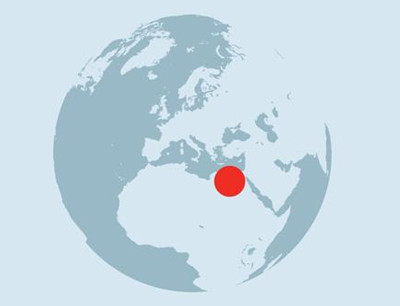Like all the objects I've chosen this week, these creatures speak of the consequences of climate change and human responses to it. They have a story to tell about their owner that stretches far beyond Grave A23.
就像本周我選擇的其他物品一樣,這些陶牛也描述了氣候變化和對人類生活產生的相關影響。它們擁有自己的故事,遠遠超越了這處命名為墓A23的墓葬地。
All of the things found in this grave were intended to be useful in another world and, in a way never imagined by the people who placed them there, they are. But they're useful for us, not for the dead. Because they allow us unique insights into remote societies, their way of death casting light on their way of life, and perhaps even more important, they give us some idea not just of what people did but of what they thought and believed.
這座墳墓中出土的一切物品,當初為了以供墓主來生使用;如今它們的有用之處,卻是當年人們放置物品時絕對想象不到的。因為它們是對我們這些活著的人有用,而不是那些死去的前人。因為它們為我們了解那遙遠的人類早期社會提供了獨特的見解,他們的死亡方式恰恰折射出他們當初的生活方式。也許更重要的是,這些隨葬品讓我們了解到的,不止是當時人們做了什么,還有他們在想什么,相信什么。
Most of what we know about early Egypt, that's Egypt before the pharaohs and the hieroglyphs, is based on burial objects that archaeologists have discovered, objects like these little cows. They come from a time when Egypt was populated only by small farming communities living along the Nile Valley.
早期古埃及是指埃及法老與象形文字出現之前的年代,通常現在我們對那段時期的了解,大部分都來自于這些類似這些小陶牛的考古發掘成果。它們所處的那個年代,古埃及人類們還只是形成規模不大的農耕小村落,零星地散布在尼河羅谷上。
Compared to the spectacular gold and tomb ornaments of later Egypt, these little clay cows are a modest thing. Funerals at that point were simpler; they didn't involve embalming or mummifying; that kind of practice wouldn't come for another thousand years. Instead we find a simpler way of burying people.
與古埃及晚期壯麗輝煌的黃金與墓飾相比,這些小小的陶牛真是登不上大雅之堂。然而在這個時期,墓葬禮儀通常相對簡單,沒有涉及到防腐處理或者木乃伊化,這兩種習俗還要晚一千年才出現。相對的,根據我們所發現的,當時采用了一種更簡單的方式來埋葬死者。












